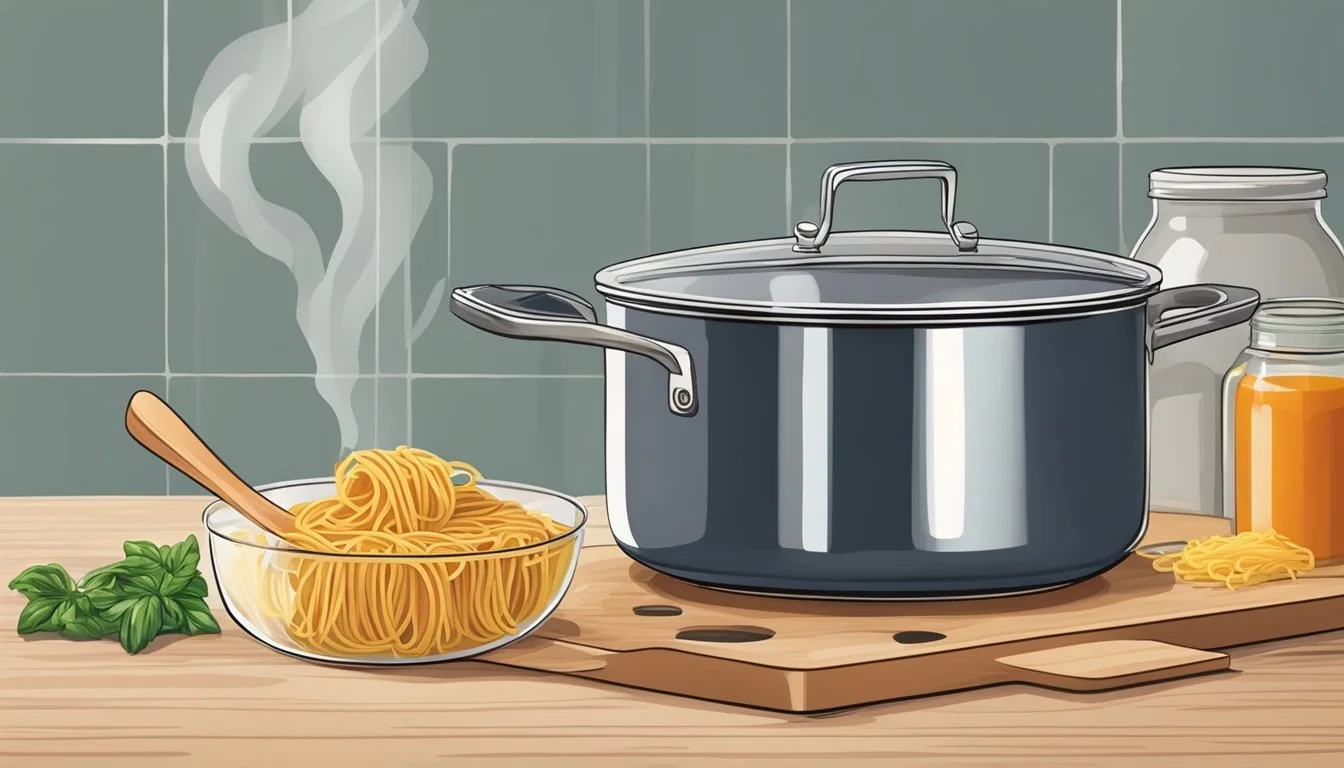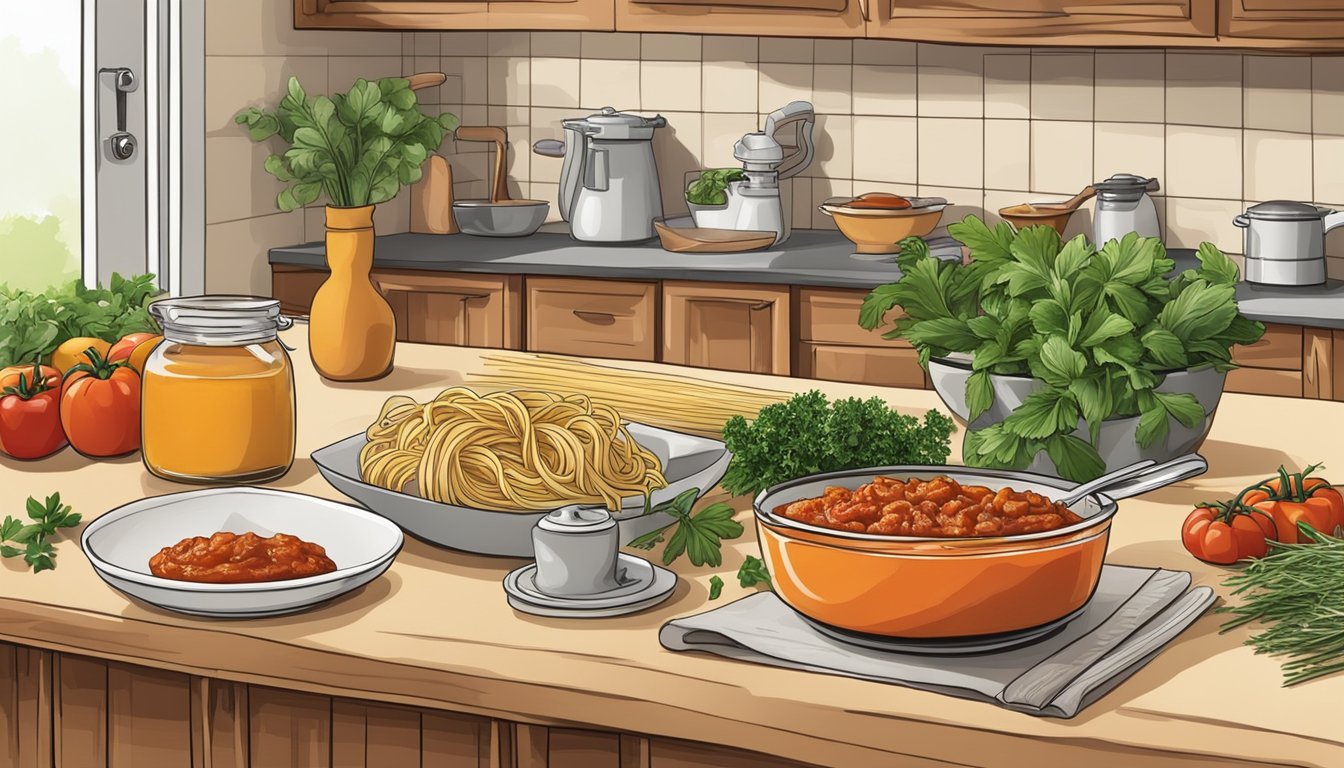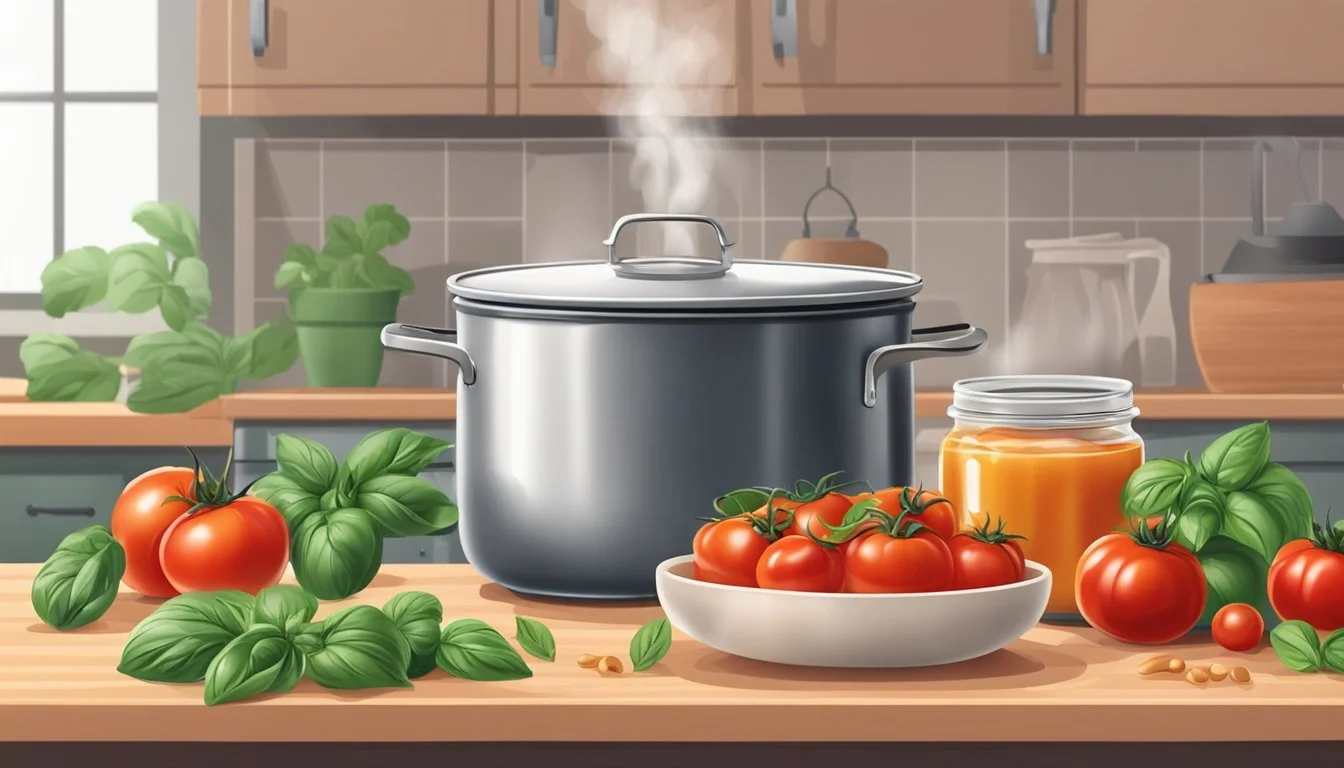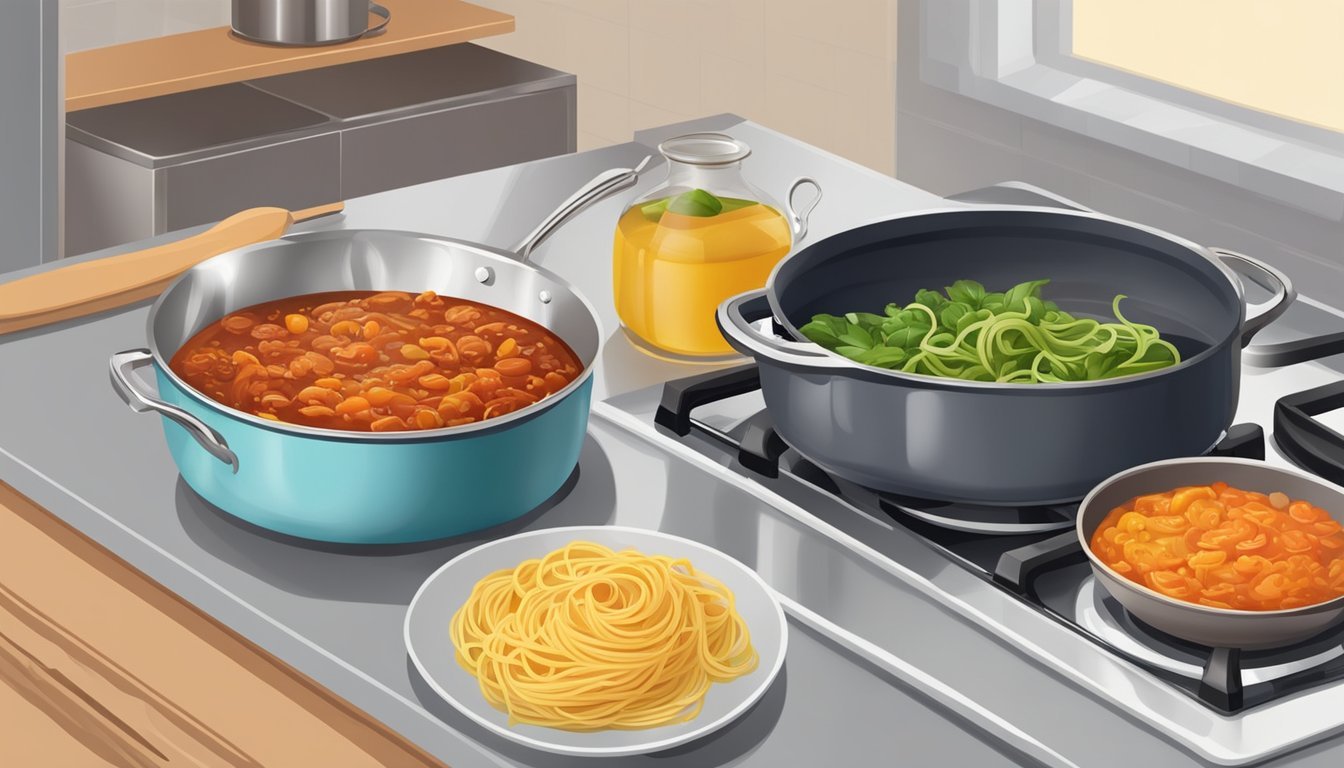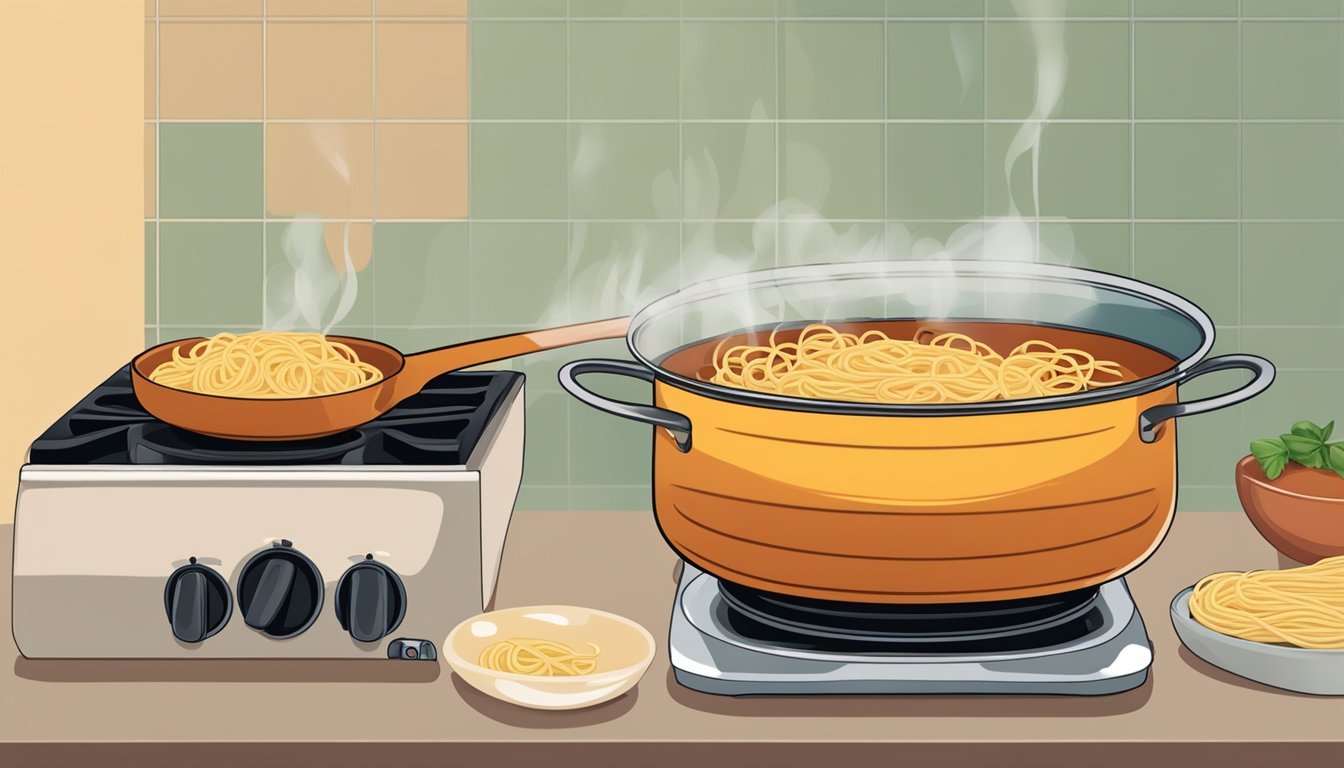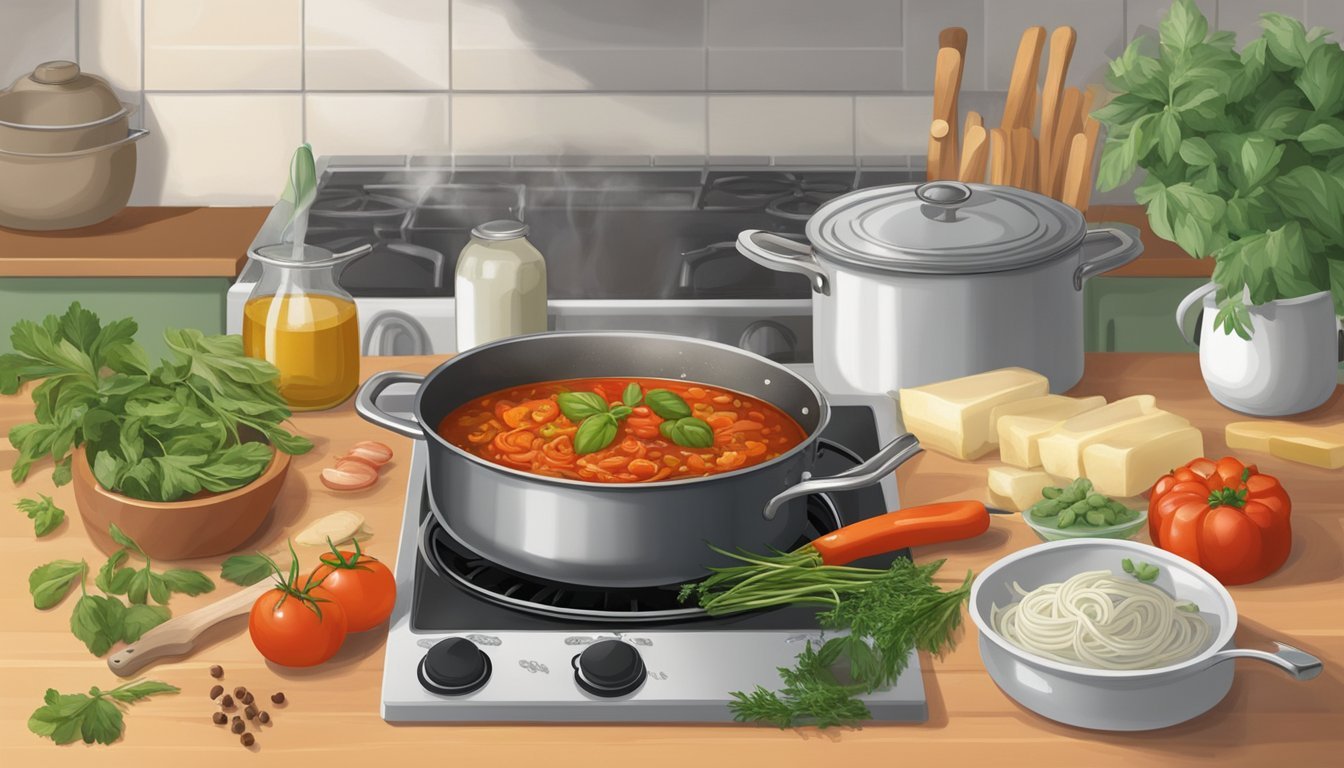How to Cook with Ragu Sauce
Mastering Family Pasta Night Meals
Family Pasta (What wine goes well with pasta?) Night is a cherished tradition in many households; it's an occasion that brings everyone together around the table to enjoy a comforting meal. Ragu sauce, with its rich and savory flavors, serves as a centerpiece for these gatherings, providing a quick and delicious way to enhance a variety of pasta dishes (What wine goes well with pasta dishes?). When cooking with Ragu sauce, the aim is to complement its hearty tomato base and blend of herbs and spices, whether the sauce is homemade or from a jar.
Preparing a meal with Ragu sauce can be a simple yet fulfilling endeavor. The sauce's versatility allows for numerous customizations, ensuring that there's a pasta dish to suit every family member's taste. When crafting a dish, cooks often begin by sautéing aromatic vegetables like onions, carrots, and celery to form a flavor foundation that heightens the Ragu. Then, incorporating proteins such as ground beef or slowly braised meats (What wine goes well with braised meats?) can transform the sauce into a robust addition to any pasta.
Adherence to proper cooking technique ensures that the pasta itself becomes a perfect canvas for the Ragu sauce. Al dente pasta, achieved by boiling it just under the time recommended on the package, provides a pleasing texture that retains a slight bite. This ensures the pasta holds up to the weight of the sauce for a harmonious balance in every bite. With these practices, Family Pasta Night with Ragu sauce becomes not just a meal, but an experience to savor.
Choosing the Right Ingredients
For an unforgettable Family Pasta Night, selecting high-quality ingredients is crucial. The perfect pasta type, ideal ragu sauce, and fresh produce and meats enhance the overall taste and dining experience.
Selecting the Perfect Pasta Type
Choosing the right type of pasta is essential for harmonizing with the ragu sauce. Spaghetti is a classic choice that holds the sauce well due to its long, thin shape. For those who prefer a heartier bite, a thicker pasta such as tagliatelle or pappardelle can be an excellent alternative as their broad surfaces are ideal for clinging to the meaty sauce.
Finding the Ideal Ragu Sauce
The ragu sauce is the centerpiece of the dish. A traditional ragu sauce incorporates tomatoes, tomato paste, and a robust meat base, often involving beef. For a luxurious depth of flavor, a splash of red wine, slowly simmered to reduce and meld with the meat, adds complexity. One may also look for sauces with notes of garlic, onion, and black pepper for an authentically seasoned taste.
Picking Quality Meat and Fresh Vegetables
Ragu sauce begins with the selection of high-quality beef; ground beef is commonly preferred for its quick cooking and tender texture. Fresh vegetables such as carrots, celery, and onion form the soffritto, contributing sweetness and aroma to the base of the sauce. Vegetables should be fresh and finely diced to ensure they meld seamlessly into the sauce. A garnish of finely chopped parsley added towards the end of cooking lends a fresh, herby lift. Finally, grating fresh Parmesan cheese over the finished dish enriches the pasta with a savory finish.
Preparing the Ingredients
Before diving into creating the perfect Ragu sauce for family pasta night, it's essential to prepare the ingredients meticulously. Chopping vegetables and herbs correctly, seasoning and marinating the meat to perfection, and cooking pasta to just the right texture are foundational steps that should not be overlooked.
Chopping Vegetables and Herbs
The first step in preparing Ragu sauce is to finely chop the vegetables required for a flavorful base. A classic Ragu often includes:
Carrots: Peel and dice into small, uniform pieces about 1/4 inch in size.
Celery: Rinse and slice thinly to match the size of the carrots.
Garlic cloves: Peel and mince the garlic cloves finely to evenly distribute their flavor.
Vegetables should be chopped consistently to ensure they cook evenly. Additionally, parsley should be rinsed, patted dry, and coarsely chopped, setting it aside to garnish the dish later.
Seasoning and Marinating Meat
Next, prepare the meat, which acts as the cornerstone of the Ragu:
Pat the meat dry with paper towels.
Season generously with salt and pepper.
For enhanced flavor, some recipes may call for marinating the meat with olive oil and garlic, letting it sit for a short period before cooking.
The meat should be brought to room temperature before cooking to ensure that it cooks evenly.
Boiling Pasta to Al Dente
Boiling the pasta is a timing-sensitive task. To achieve the perfect "al dente" texture:
Bring a large pot of water to a rolling boil. Add a generous amount of salt to the boiling water.
Add the pasta and cook according to the package instructions, usually 1 minute less to maintain firmness.
Stir occasionally to prevent sticking, and promptly drain once it reaches the desired texture.
Preparing the ingredients with care is the first step toward a delicious and memorable Ragu for family pasta night.
Cooking the Sauce
Creating a delectable Ragu sauce involves layering flavors from a soffritto base, properly browning meats with aromatics, and then simmering the sauce to achieve the ideal taste and consistency.
Making a Simple Soffritto
A soffritto is the foundation of a flavorful Ragu, usually composed of finely chopped carrots, onions, and celery. One starts by heating extra-virgin olive oil in a sturdy pan, such as a Dutch oven. Using a medium-low heat, they should sauté these vegetables until they are tender, ensuring the flavors concentrate without browning too aggressively.
Browning the Meat with Aromatics
Next, incorporating aromatics like minced garlic and dice pancetta enriches the sauce's depth of flavour. They add ground meat, typically beef or a combination of beef and pork, to the pot and cook it until it achieves a deep brown color. Seasoning with salt, pepper, and Italian seasoning during this process is key to building complexity.
Simmering Ragu to Perfection
Lastly, for a full-bodied Ragu, they stir in robust elements such as red wine, allowing it to reduce, followed by canned tomatoes, bay leaves, and a spoonful of tomato paste. They bring the mixture to a gentle simmer, adjusting the heat to maintain this state. Over a low heat, the sauce should cook slowly – in a slow cooker, pressure cooker, or Instant Pot if preferred – envelope in a bouquet of heady aromas, until the tomatoes break down and marry the flavors, usually for about 40 minutes to several hours. This patient simmering is what grants ragu its renowned richness. Before serving, a final stir of fresh parsley ensures a bright, fresh finish.
Assembling the Dish
Careful assembly elevates pasta and ragu sauce from simple ingredients to a satisfying family meal. This section focuses on combining the cooked pasta with the ragu while enhancing flavor with cheese, herbs, and seasonings.
Mixing Pasta and Ragu
Once the pasta is cooked al dente, typically one minute less than the packet instructions to maintain some bite, it should be drained and returned to the pot. The ragu sauce, heated until just simmering, is then added to the same pot. For even distribution, gently stir the ragu into the pasta, ensuring each strand or piece is evenly coated with the sauce. For family servings, this method allows the flavors to meld consistently throughout the dish.
Adding Cheese and Herbs for Flavor
To incorporate additional flavor and texture, freshly grated Parmesan cheese and chopped parsley can be sprinkled over the pasta and ragu mixture. A reasonable measure, such as a quarter cup of Parmesan and a tablespoon of parsley per serving, provides a sharp, nutty flavor from the cheese and a fresh, earthy note from the parsley. A pinch of black pepper and a small amount of butter may also be stirred in for depth. These ingredients are combined with the pasta off the heat to prevent the cheese from becoming stringy and to distribute the herbs evenly.
Serving Suggestions
When planning the perfect Family Pasta Night, selecting suitable accompaniments to the Ragu sauce can elevate the meal. One should consider balance and harmony with every dish to create an authentic Italian dining experience.
Pairing with the Right Sides
A simple salad is a refreshing choice to serve alongside a hearty pasta with Ragu sauce. It can provide a crisp and light contrast to the rich flavors of the spaghetti sauce. Here is a recommended salad:
Ingredients:
Sliced cucumbers
Cherry tomatoes
Italian vinaigrette
Instructions:
Toss the mixed greens, cherry tomatoes, and cucumber slices in a large bowl.
Drizzle with Italian vinaigrette just before serving to keep the salad crisp.
Garlic bread also makes an excellent side, as its robust flavor pairs well with the savory Ragu sauce.
Garlic Bread Recipe:
Slice a baguette lengthwise.
Mix softened butter with minced garlic, then spread on the bread.
Toast under a broiler until golden brown.
Finishing Touches for an Italian Feast
The final additions to the table should inspire the senses and complement the Italian cuisine theme. Here are some finishing touches:
Garnishes: Sprinkle freshly grated Parmesan cheese and chopped basil over the pasta with Ragu sauce to add depth and Italian authenticity.
Wine Pairing: Select a red wine, such as Chianti or Sangiovese, as they pair splendidly with tomato-based sauces. (What wine goes well with tomato-based sauces?)
Storage and Reheating Tips
Proper storage and reheating are crucial for maintaining the taste and safety of ragu and pasta dishes. By following these guidelines, one can ensure that leftover ragu and pasta taste as good as they did when first prepared.
Storing Leftover Ragu and Pasta
Leftover ragu should be stored in an airtight container and placed in the refrigerator if it’s to be consumed within a few days or in the freezer for prolonged storage. Ragu can typically last 3-4 days in the fridge and up to 3 months in the freezer. For pasta, once it's cooled, it should be stored separately in a container, also airtight, to prevent it from absorbing too much sauce and becoming mushy.
Refrigerate within 2 hours of cooking to minimize risk of foodborne illness.
Clearly label your containers with the date of storage.
Best Practices for Reheating Without Losing Flavor
To reheat the ragu sauce without losing flavor, one can use the microwave or the stovetop. If using a microwave, transfer the desired portion of ragu into a microwave-safe bowl, add a bit of water or extra sauce to keep it moist, and cover it. Heat in short intervals, stirring in between to ensure even warming.
Stovetop Method: Reheat over low heat, stirring occasionally until hot.
Microwave Method: Use 50% power in short bursts, stirring regularly.
If reheating pasta, it should be done separately from the sauce, and can be quickly blanched in boiling water or warmed in the microwave with a sprinkle of water to prevent it from drying out. Remember, for pasta, short reheating times are key to avoid overcooking.
Nutritional Information
When cooking with Ragu sauce for a family pasta night, one has to consider the nutritional aspects of the meal. Ragu sauce, particularly when it's store-bought, can be a convenient and easy addition to pasta dishes but may vary in nutritional content based on the type and brand.
A typical serving of Ragu sauce, which is about half a cup, can contain the following:
Calories: Ragu sauce generally contains around 70-100 calories per serving.
Fat: It usually has 2-3 grams of fat, of which a minimal amount is saturated fat.
Certain Ragu sauces boast a "light" or "lower sodium" label, which may appeal to those watching their intake for health reasons.
Sodium: The sodium content can be significant, often ranging from 300-600 milligrams, so those with dietary restrictions should choose the lower-sodium versions.
When it comes to nutrition, Ragu sauce can also contribute to one's intake of vegetables, as many sauces include tomatoes, onions, and sometimes other vegetables like bell peppers. The sauce typically provides a modest amount of vitamin A and vitamin C.
For those following a vegetarian diet, many Ragu sauces are suitable as they do not contain meat products; however, checking the label is always advised to ensure that it aligns with dietary preferences.
In summary, the benefit of using Ragu sauce is the combination of simplicity and convenience, allowing for a quick and easy meal that can still be tailored to nutrition preferences. While store-bought sauces can sometimes be high in sodium and preservatives, they can also offer a homely taste without a lot of calories, making them a practical choice for a quick family meal.
Customizing Your Ragu Sauce
Every cook has the opportunity to tailor their Ragu sauce to match their family's taste preferences and dietary needs. By starting with a basic Ragu, one can explore a variety of flavor profiles and ingredients to enrich this classic Italian sauce.
Adding Your Own Twist to the Recipe
To infuse a personal touch into a homemade Ragu sauce, one may consider using extra virgin olive oil for its rich flavor as a base. A dash of granulated sugar can balance the acidity of the tomatoes. Introducing a mix of Italian herbs like oregano, basil, and chopped parsley adds depth and freshness to the sauce. For a more robust and meaty flavor, incorporating shredded meats like slow-cooked beef or pork can create a heartier meal. Chefs often recommend a long simmer time for the sauce to develop a truly rich and layered flavor characteristic of authentic Italian cooking.
Vegetarian Variations and Substitutes
To cater to vegetarian preferences, the Ragu sauce can be made with plant-based grounds as an optional substitute for traditional meats. Vegetarians can also use an array of vegetables like mushrooms, bell peppers, and zucchini to add both texture and nutrition to the sauce. Utilizing vegetable broth in place of beef broth maintains the richness without sacrificing the depth of flavor. A splash of extra virgin olive oil can bring an additional layer of smoothness to the vegetarian variation of this classic Italian sauce.
Using these customizable elements, Ragu sauce can easily be adapted to suit a range of palates while maintaining its roots in versatile and hearty Italian cooking.
Advanced Techniques for Perfecting Ragu
When cooking ragu sauce, one seeks to maximize flavors through cooking methodology and the utilization of kitchen gadgets. Mastery in slow-cooking techniques and the right equipment can elevate a simple ragu to a memorable dish.
Utilizing Kitchen Gadgets for Enhanced Flavor
The key to unlocking deep, rich flavors in beef ragu lies in using the right kitchen gadgets:
Pressure Cooker/Instant Pot: These gadgets are game-changers for building complex flavors in a fraction of the time. By cooking under pressure, beef chunks are infused with herbs like fresh thyme, intensifying the taste.
Dutch Oven: A traditional choice for ragu alla bolognese, a Dutch oven provides even heat distribution, allowing for consistent simmering and flavor development.
Gadget Use Case for Ragu Pressure Cooker Quick infusion of flavors with beef Instant Pot Multifunctional for different ragu stages Slow Cooker Long hours of simmering for tender meat Dutch Oven Even cooking and optimal heat retention
Mastering the Slow-Cooked Ragu Method
Slow-cooked ragu represents the apex of texture and flavor development:
Slow Cooker: This is ideal for cooking shredded beef ragu. One can cook a chuck roast over low heat for 8 hours until the meat is fall-apart tender.
Dutch Oven Simmering: Those opting for ground beef can rely on the low-and-slow method in a Dutch oven. One should gently simmer the ragu over very low heat, usually for 2 to 3 hours, which allows intricate flavors to meld together.
Method Technique Cooking Time Slow Cooker Low temperature for many hours ~8 hours Dutch Oven Gentle simmer over low heat 2-3 hours
Ingredients like chuck roast or ground beef should be browned ahead of slow cooking, making certain to sear the meat properly to create a flavorful foundation. Adding layers of complexity through proper seasoning, such as using fresh thyme, can significantly enhance the final dish.
Conclusion
In the journey of crafting the perfect family pasta night dish, mastery over Ragu sauce is essential. It acts as the cornerstone of many hearty, satisfying Italian meals.
Summarizing the Art of Cooking Ragu
One achieves the best results with Ragu by carefully simmering the sauce to concentrate its flavors. A well-cooked Ragu sauce can elevate simple pasta varieties such as pappardelle, tagliatelle, shells, and even stuffed ravioli, turning an easy dinner into a memorable feast.
When using Ragu with pappardelle – broad, flat pasta noodles – the sauce clings to the large surface area, ensuring each mouthful is rich and flavorful. Similarly, with tagliatelle, the slightly narrower ribbons offer an excellent sauce-to-pasta ratio.
Preparing Ragu sauce for ravioli offers a delightful twist, as the meaty sauce complements the filled pasta, while for pasta shells, the Ragu nestles within each shell, providing a burst of taste with every bite.
For a successful Ragu dish, remember the key is in the simmering – slow and low is the way to go. Patience will yield a sauce that's both robust and nuanced, one that thoroughly complements the chosen pasta.
Incorporating Ragu sauce into family pasta night not only promises a warm, delightful meal but also the joy of sharing a carefully crafted Italian tradition.

